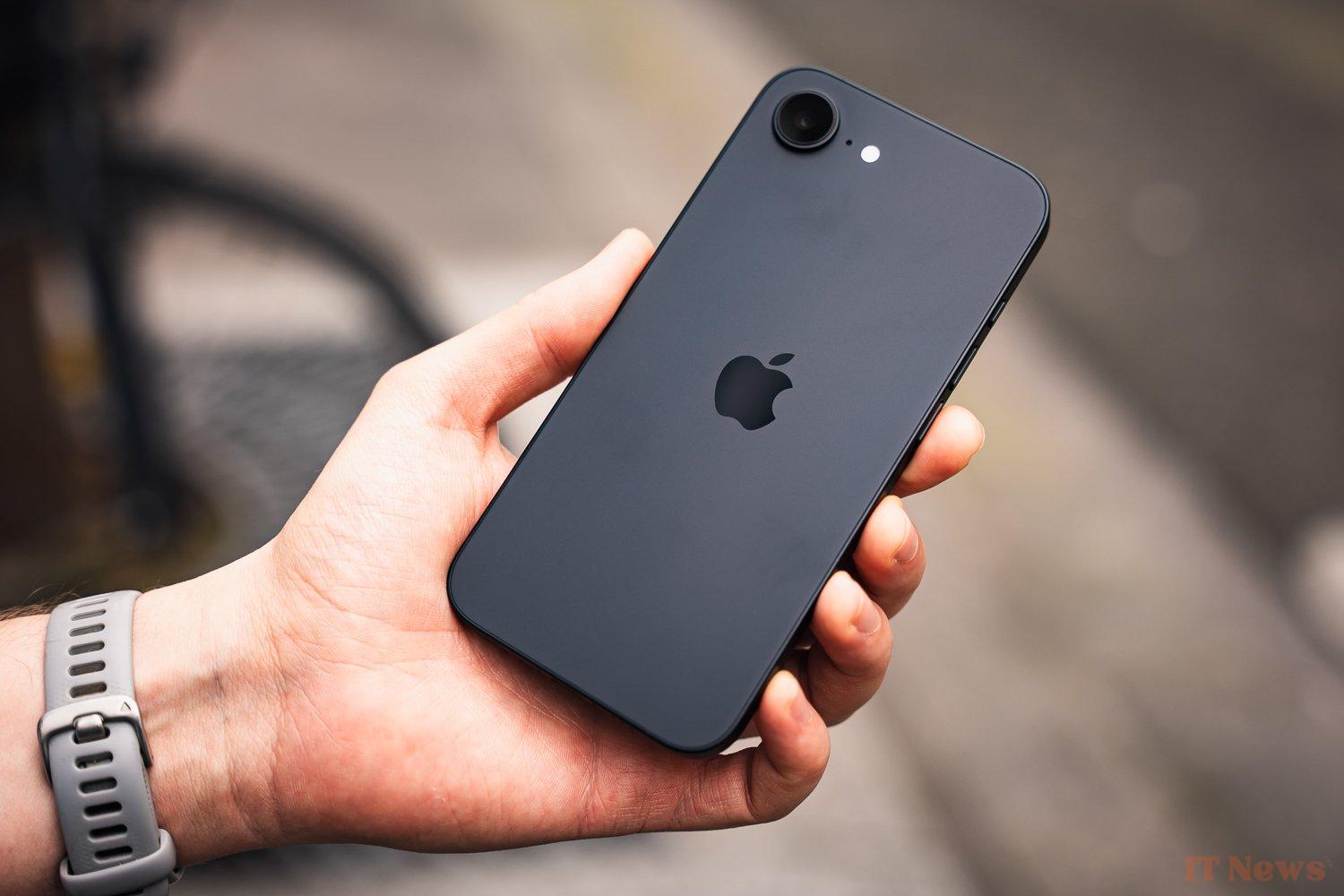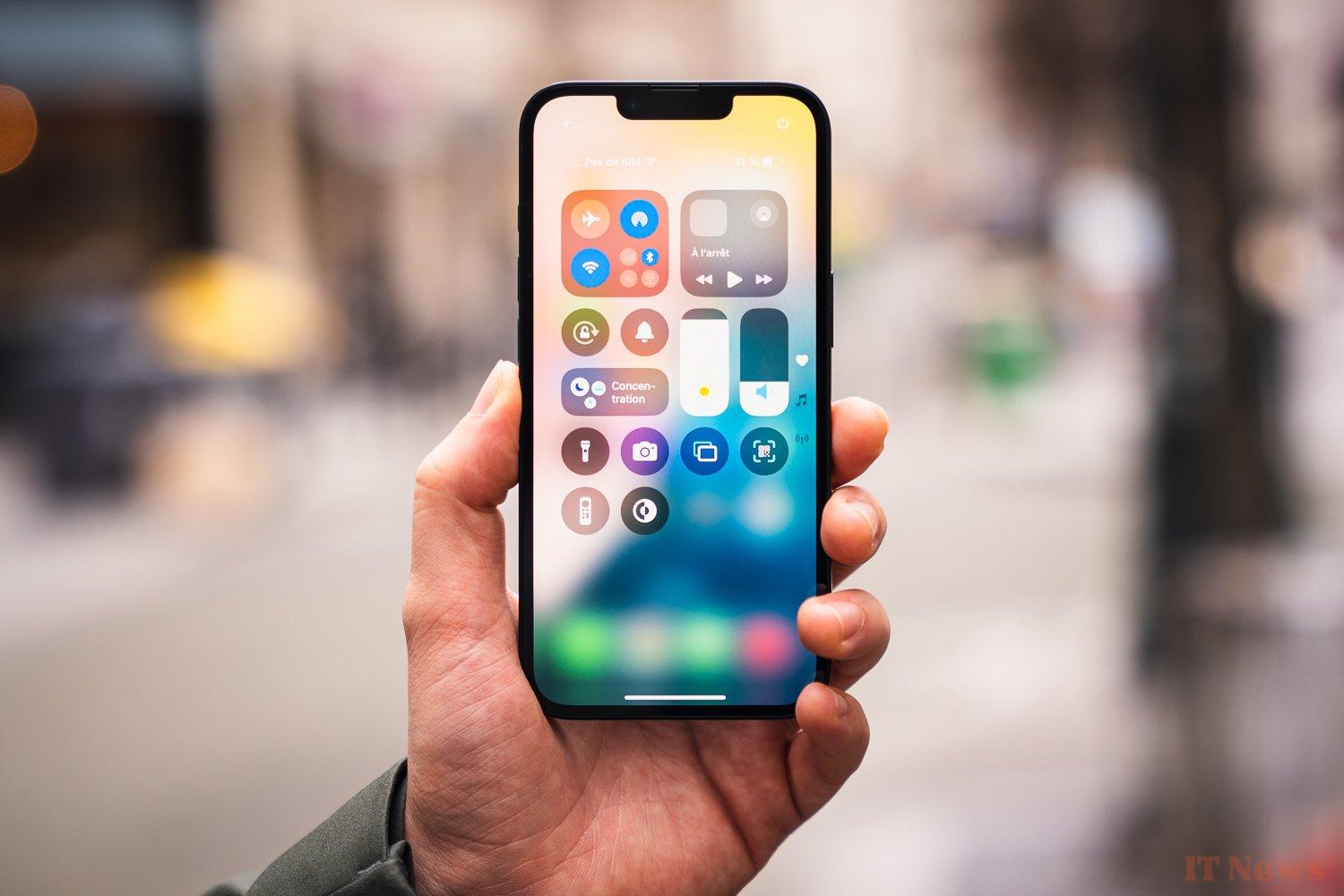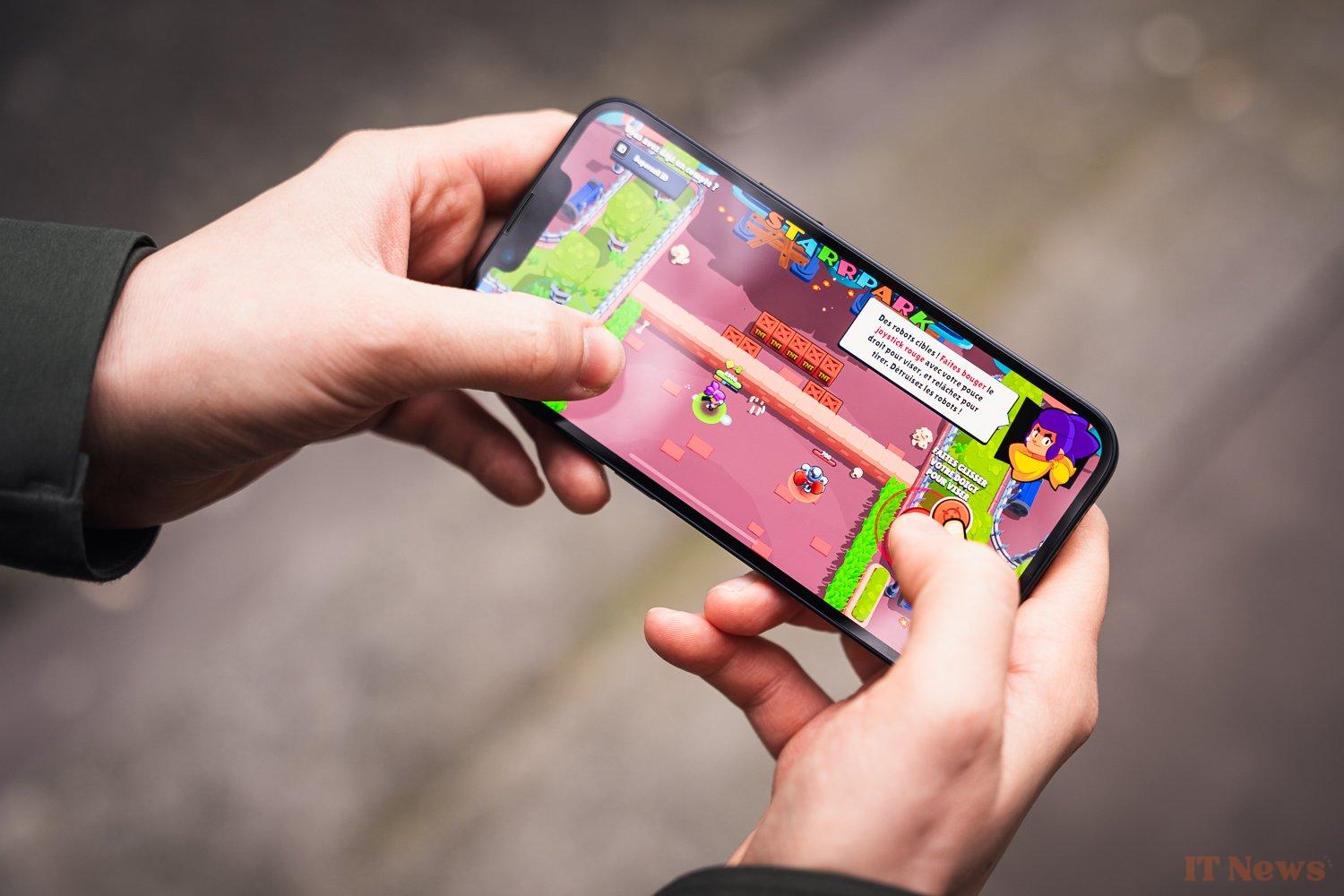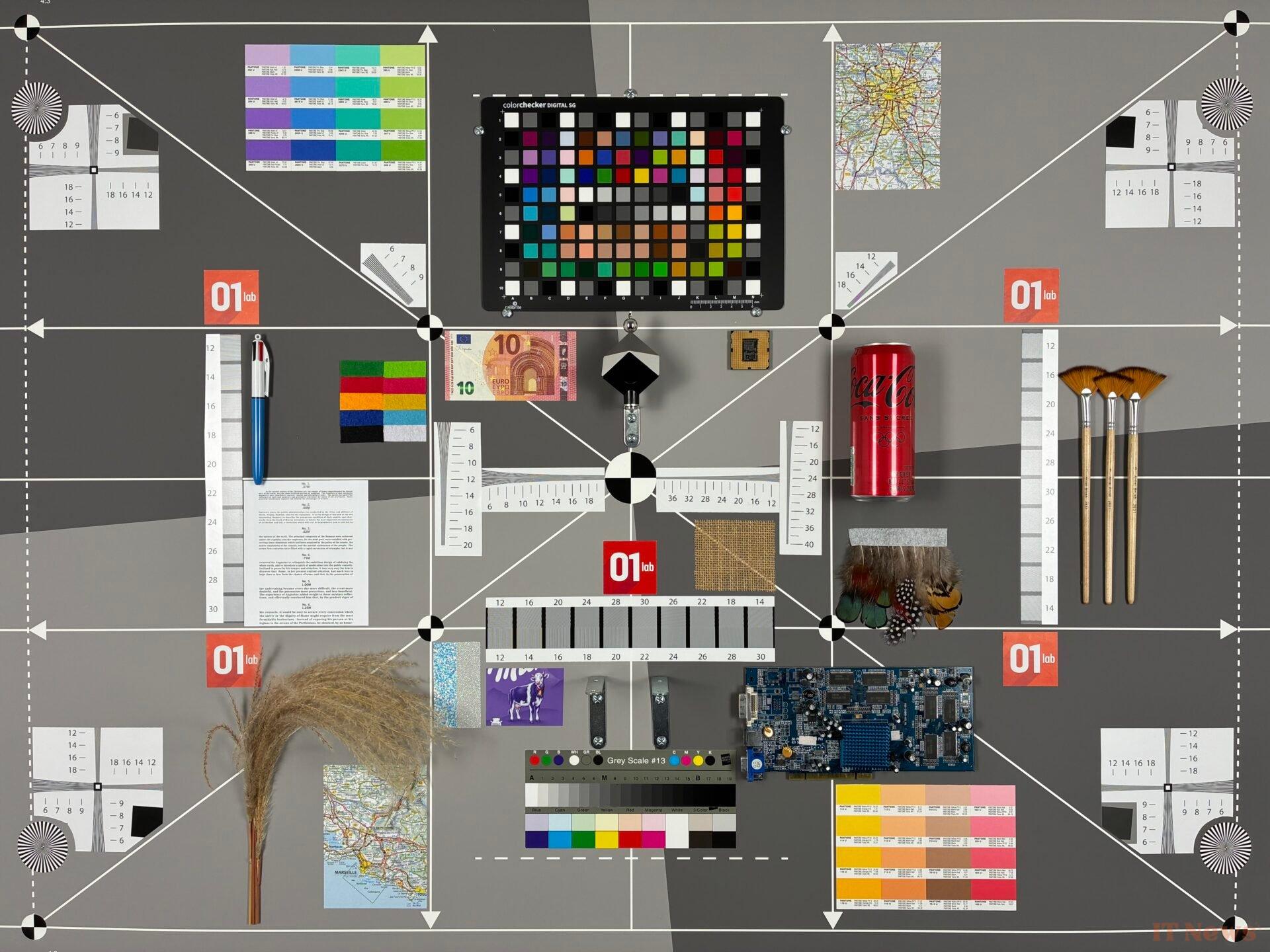The iPhone 16e has been sent to 01Lab, here are our first measurements and our first feedback on the new Apple smartphone before our full test. If you want to compare it to previous iPhones, we also have a full article dedicated to that.
Design: beautiful and old school
Before diving into the precise tests of 01Lab, let's allow ourselves a first look at the design of this iPhone 16e. As a reminder, it takes the basics of an iPhone 13 or 14 with the return of the notch, but of course it includes the USB-C port that has become mandatory.
Let's be clear, the notch is probably the element that will give you the most feeling of going back in time or of a slightly dated design. But other factors may play a role: the bezels have been slightly reduced over the years. The iPhone 16e's body-to-screen ratio is 86.1%, compared to 86.6% on the iPhone 14. It rises to 87.4% on the iPhone 16.
Bezel
And this will obviously be even more striking on an iPhone 16 Pro, with 89.3%. Another element to add is that the edges of the iPhone 16e are a bit more prominent than on the other models, making the grip a bit more rustic. That being said, it is still excellent and the product exudes the expertise of the Cupertino firm.
The iPhone 16e could manage to make us forget all these small concessions with its back. This one, covered with matte black glass (for our test model), pierced only with a photo module, a flash and a tiny microphone, gives in to assumed minimalism. And this with great success. All the promise of the product is contained in this single sensor which seems to say "I am a smartphone without frills".
A screen of an iPhone 14 more or less
Let's move on to the measurements of the screen. These bring it very frankly closer to an iPhone 14, we would not be surprised if we learned that it was the same panel as its ancestor. The average brightness of 804 cd/m² is practically the same, the HDR peak brightness is a bit lower with 1114 cd/m² and there is no boost mode to face the sun's rays, just like in the iPhone 14. To give a point of comparison, the Pixel 8a, which sold for 549 euros when it was released, goes up to much higher values: 1683 cd/m² average and 1376 cd/m² HDR peak.
In terms of color calibration, the screen does very well. It displays an average delta E 2000 of 3.67, when it is customary to say that you should aim for less than 3, the lower the value, the better the precision. We therefore see a slightly better calibration for the iPhone 16 and its 3.74. However, Apple is not as precise as a Xiaomi 14T Pro for example, which reaches 2.38. The value offered is still very decent, though.
A bit disappointing battery life
For battery life, Apple claims that the iPhone 16e is much better than the iPhone 16 in video battery life, showing 21 hours of continuous video streaming on the 16e versus 18 hours on the 16. According to our new protocol introduced in early 2025, the two smartphones are actually quite close. The said protocol is a bit more demanding than simple video playback since it also integrates 3D modeling, audio playback, HDR video playback, among other things.
Within a few seconds, both the iPhone 16 and 16e display 15 hours and 10 minutes to go from 100% to 0% battery life. A fairly average score, when compared to a OnePlus 13R for example, sold for 769 euros, or 50 euros more than the iPhone 16e. It actually goes up to 21 hours and 33 minutes on the same uses.
Photo: a single module, but a good module
We will go into more detail about the photo in our full test. But we can already compare the photo performance of the 16th with a Pixel 8a for example, often considered the king of mid-range photography.
On the left, the iPhone 16e, on the right, the Pixel 8a.
While the missing ultra-wide-angle lens is definitely felt, Apple does not seem to have missed the integration of the main module, which appears to be of good quality. Its sharpness can easily be measured against the Pixel 9a, to which it opposes a slightly more pronounced and artificial treatment, but with a very competitive impression of detail and sharpness.
Performance: a little further back than expected, but nothing catastrophic
As for performance, the iPhone 16e does indeed integrate the same A18 chip as the iPhone 16, but with one less GPU core (graphics engine).
The iPhone 16e does very well. It’s just a few steps behind the iPhone 16 and easily beats the Google Pixel 8a with its Tensor G3. It even beats the iPhone 16 on the CPU part of Geekbench 6.









0 Comments